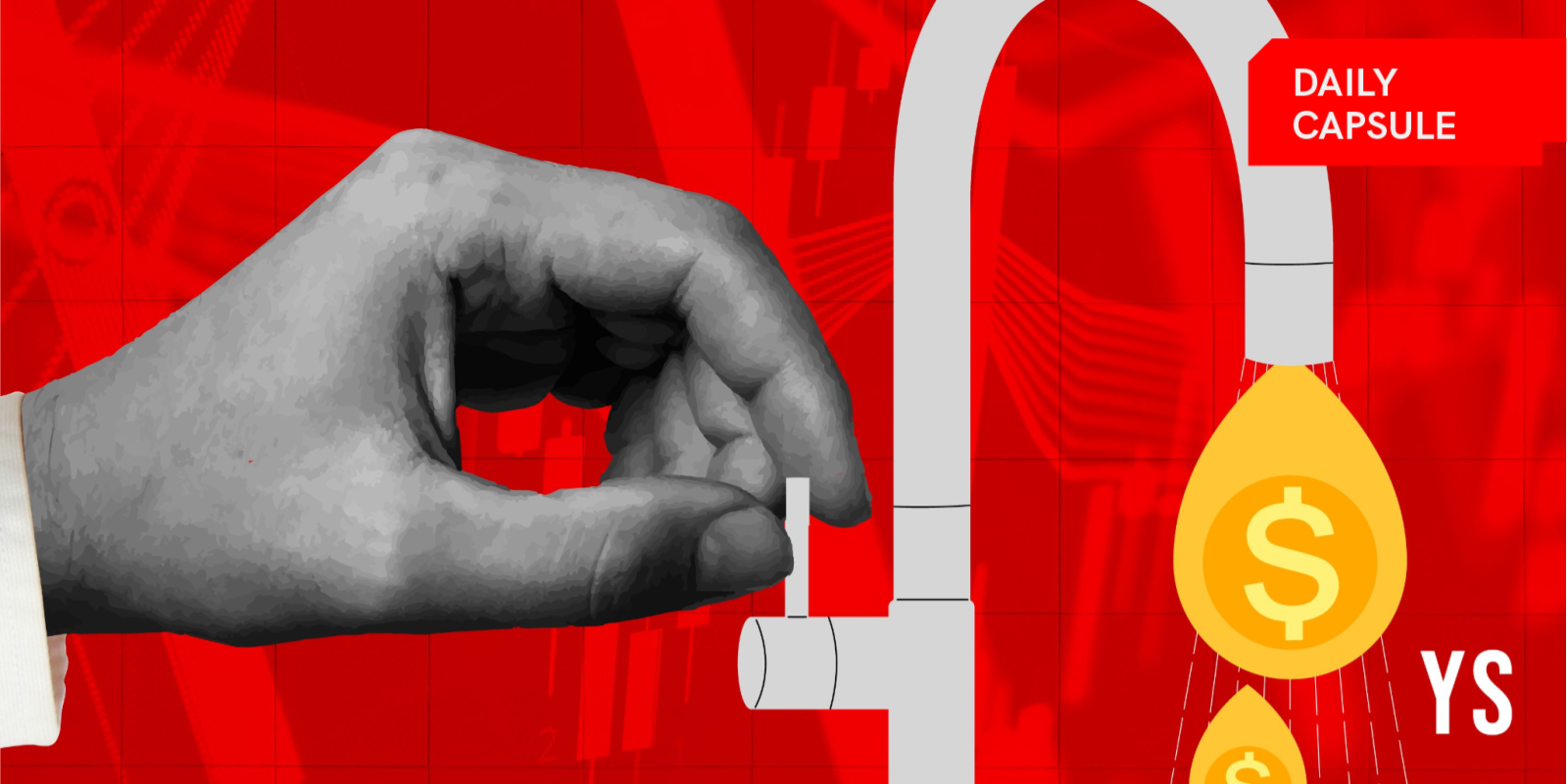Budget 2017: Arun Jaitley’s 10 themes which held the Budget together
Athira Nair

Wednesday February 01, 2017 , 7 min Read
Finance Minister Arun Jaitley presented his fourth consecutive Budget in Parliament on February 1 after an element of uncertainty and confusion created by the demise of Lok Sabha MP E. Ahamed in the early hours of Wednesday.
In the morning, members of opposition parties including the Congress clamoured for postponing the Budget presentation by a day, saying that since a sitting member had died the rules required the House to be adjourned after paying its respects to its departed member, without transacting any of the listed businesses.
The government, however, refused to give in to the pressure from the opposition and the Finance Minister went about his business at the appointed hour (11 a.m.).
The Budget turned out to be an unprecedented one, not only because of the drama preceding it, but also because it was the first unified Budget in more than 90 years, having merged the Rail Budget with the general budget.

How the budget speech started?
The Finance Minister began his Budget speech by reeling out a few macroeconomic stats to highlight the achievements of the Modi government. He noted that while the Consumer Price Index (CPI) inflation had reduced from 6.3 percent in July 2016 to 3.4 percent in December last year, India's ranking in the global manufacturing index had risen from 9th position to 6th.
The Finance Minister also spoke about the two tectonic economic changes brought in by his government over the past year: the passing of the Goods and Services Tax (GST) Bill, and demonetisation of Rs 500 and Rs 1000 notes on November 8, 2016. Justifying the demonetisation drive, the Finance Minister stated,
"It was the culmination of a series of events over the last two years. We are sure that the GDP will be bigger and better through demonetisation."
According to the FM, demonetisation has caused a reduction in corruption and increased savings through adoption of digitalisation and tax formalisation measures. An early sign of this positive change, according to the FM, is the reduced rates at which banks have begun to lend credit.
Effects of demonetisation
The Finance Minister assured the House that the effects of demonetisation will not spill over into the next year. Some of the positive impact of the move, according to him, were:
- Surplus liquidity to lower borrowing cost and boost economy
- Better credit support to SME
- Assistance to rural areas as well as backwards and peasant income
Holding forth on how the world sees India’s GDP, he pointed out that while the International Monetary Fund (IMF) says India’s GDP is going to rise 7.4 percent in 2017, the World Bank sees it growing at 7.6 percent in 2017-18.
A budget of firsts
The FM also stated how this budget had many firsts attached to it.
Preponing the Budget
According to the FM, for the first time the budget had been preponed to February 1. This was done to ensure that all the departments concerned would get ample time make the schemes announced in the budget operational from the beginning of the new financial year.
Merged with the Railway Budget
This was the first time in the history of independent India when a separate Railway Budget had been done away with. Presenting a combined budget, the Finance Minister announced a total outlay of Rs 1.31 lakh crore for Indian Railways for 2017-18, saying Rs 55,000 crore out of the total had been provided by the government from its budgetary expenditure.
The 10 tenets
The FM said the government's three-point agenda for the next year was Transform, Energise, and Clean India, and in keeping with those goals, the budget had zeroed in on 10 themes. These are as follows:
1) Agriculture: doubling of farmer’s income in five years
Credit target for the next fiscal has been fixed at Rs 10 lakh crore. Jaitley has stressed on new measures to enable higher production and productivity for the farmer, and help them deal with post-harvest challenges. An additional incentive of 3 per cent is provided to farmers for prompt repayment of loans within due date, making an effective interest rate for them at 4 per cent.
2) Rural Population: Employment and infrastructure for rural population
Rs.3 lakh crore is spent in rural areas every year aiming for this. MGNREGA will be strengthened for the sake of every rural household. Besides improving farm productivity, 10 lakh composite pits will be achieved by March 2017. From Rs.38500 crore in the last fiscal, allocation for MGNREGA has been raised to Rs.48000 crore in 2017-18, effectively making it the highest ever.
3) Youth: re-energising through education and skill development
Annual learning outcome in schools will be introduced; along with reforms in University Grants Commission. Innovation fund for secondary education to be set up, and colleges and institutions will have more autonomy. Pradhan Mantri Kaushal Kendras will be extended to 600 districts; 100 international skill centres will be opened to help people get jobs abroad.
4) Poor & Underprivileged: Healthcare and Affordable Housing for the under-privileged
The Central government is planning to built one crore new houses for those living in Kachha houses by 2019. Jaitley stressed that villages free of open defecation will be given priority for piped water supply. On the health front, government aims to to eliminate tuberculosis by 2025. Two new AIIMS Hospitals will be set up in Jharkhand and Gujarat (although deadlines have not been specified).
5) Infrastructure: To improve the efficiency, productivity and for quality of life
Trade Infrastructure for Export Scheme (TIES) will be launched in 2017-18. For transportation sector as a whole, including rail, roads, shipping, provision of Rs.2,41,387 crores has been made in 2017-18. Affordable housing to be given infrastructure status. By the end of 2017-18, high speed broadband connectivity on optical fibre will be available in more than 1,50,000 gram panchayats, under BharatNet.
6) Financial sector: Growth and stability through stronger institutions
An expert committee will be constituted to study and promote creation of an operational and legal framework to integrate spot market and derivatives market in the agricultural sector, for commodities trading. e- NAM will be an integral part of the framework.A Computer Emergency Response Team for our Financial Sector (CERT-Fin) will be established. Foreign Investment Promotion Board to be abolished in 2017-18.4
7) Digital economy for transparency
Jaitley said that a cash economy enables people to avoid taxes, and demonetization has helped in fighting this. He has capped cash transactions for individuals at Rs3 lakh, and maximum amount of cash donation to political parties from one individual at Rs2,000. A Payment regulatory board will be set up in RBI to regulate electronic payments, replacing Board for Regulation and Supervision in Payments and Settlements System.
8) Public Service: Effective governance and efficiency of service delivery
Government e-marketplace is now functional for procurement of goods and services. Head Post Offices will issue Passports soon. A Centralised Defence Travel System has been developed through which soldiers and officers can book travel tickets. Web-based interactive Pension Disbursement System for Defence Pensioners will also be established.
9) Prudent fiscal management for optimal utilisation of resources
Jaitley has now stepped up allocation for Capital expenditure by 25.4% over the previous year. Total resources being transferred to the States and the Union Territories with Legislatures is Rs.4.11 lakh crores, against Rs.3.60 lakh crores in 2016-17. For the first time, a consolidated Outcome Budget, covering all Ministries and Departments, is being laid along with the other Budget documents.
10) Tax administration
For those with annual income between Rs.2.5 lakh and Rs.5 lakh, annual income tax has been reduced from 10% to 5%, and it can be done in a single page form for filing returns. There will be a 10% surcharge for tax payers whose income is between Rs50 lakh and Rs1 crore. During this fiscal, only 1.7 crore people out of the 4.2 crore salaried people have filed income tax returns.










![[YS Learn] PolicyBazaar CEO Sarbvir Singh on managing stress and mental health in times of crisis](https://images.yourstory.com/cs/2/a9efa9c02dd911e9adc52d913c55075e/img-4-1594888520850.png)